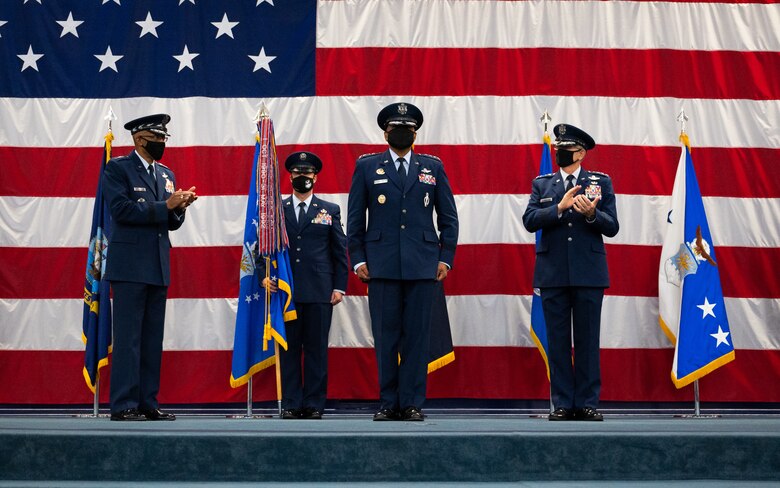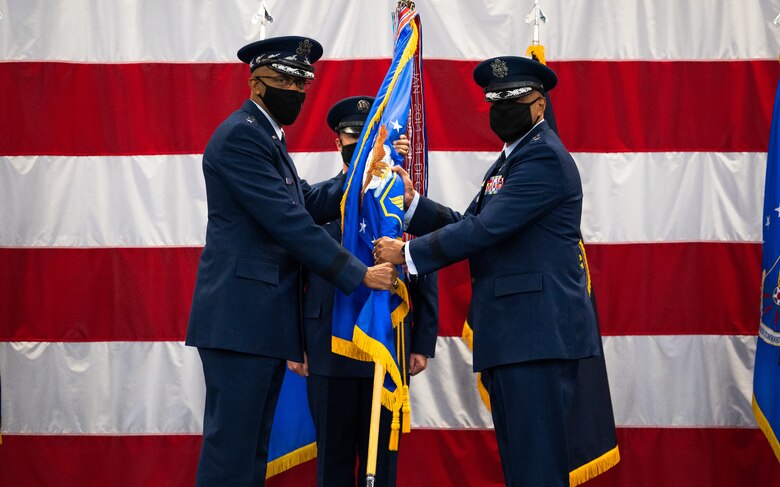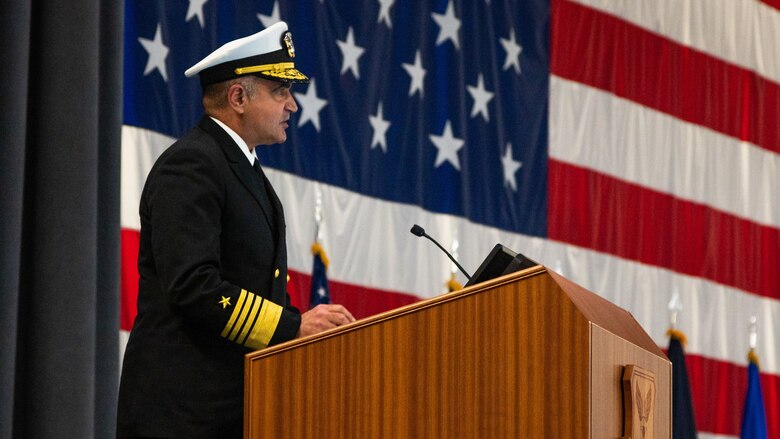Gen. Anthony Cotton took command of Air Force Global Strike Command from Gen. Tim Ray, outgoing AFGSC commander, during a ceremony at Barksdale Air Force Base, Aug. 27. Cotton is the newest leader of the U.S. Air Force's portion of the nuclear enterprise, which maintains the nation's only force of intercontinental ballistic missiles and strategic bombers.
Air Force Chief of Staff Gen. CQ Brown, Jr. presided over the ceremony.
"It is this command that provides the nation the advantage of global strike, the critical backstop for our diplomats and the reassurance for our allies and our partners," Brown said. "None of this is possible without the Strikers of Air Force Global Strike Command. Our portion of the nuclear triad is, and must continue to be, safe, secure and reliable.
"There is simply no one more qualified and ready to take the reins of Air Force Global Strike Command," Brown said of Cotton. "There are many things the Air Force must do well, but there are few things the Air Force can never get wrong. Ensuring the safety, the security and reliability of two-thirds of our nation's nuclear triad is binary. We must never fail, and that is why General Cotton is the perfect choice to inspire and lead this command into the future."
With this change of command, Cotton became the sixth commander of Air Force Global Strike Command.
"Success requires leaders with a solid understanding of strategic imperatives, the ability to build teams and a vision biased towards action, and Gen. Cotton is a leader who has all three," Brown added. "I know when called upon, Global Strike will be ready to fly, fight and win, providing our nation and its allies airpower, anytime, anywhere."
Adm. Charles Richard, commander of U.S. Strategic Command, was also in attendance and reiterated Air Force Global Strike Command - Air Forces Strategic Air's importance to the Department of Defense's mission.
"If we do not do our job, if we do not maintain strategic deterrence, nothing else in the Department of Defense is going to work the way it was designed," Richard said. "You inherit all the capabilities that are necessary to provide unmatched strategic deterrence to the nation. I have full faith and confidence in your abilities to lead this command."
Following receipt of the guidon, Cotton gave his first address as the new AFGSC commander.
"I cannot put into words how proud I am to be a part of this incredible command," Cotton said. "In carrying the legacy of long range strike we have a huge responsibility. We must always be ready. Always ready to stand up to any aggressor, always ready to protect our allies and always ready to provide a safe, secure, reliable and effective arsenal of long range strike capability.
"We need to masterfully execute the modernization of our nuclear portfolio. We need to have agile technology infused in our systems, ready to adapt to future challenges," he added. "We also need to sustain our current force and keep it capable and ready until replacements arrive. We need to innovate and collaborate. Not just with military industry and government, but also with community partners to discuss quality of life, safety, education and social issues."
Cotton also explained the importance of inclusion and diversity, specifying that every Airmen within the command must embody Striker Culture.
As he wrapped up his remarks, Cotton made two promises to the Airmen of Air Force Global Strike Command.
"I promise to never take for granted the sacred trust the American people have in us, and I promise that I will do everything I can to ensure that we are always ready, no matter what challenges come our way," Cotton said.
Cotton is responsible for the nation's fleet of Minuteman III intercontinental ballistic missiles, the land-based component of the nuclear triad. Three missile wings and one numbered Air Force maintain this deterrent force on a day-to-day basis. He is also responsible for all of the nation's strategic bombers, which include the nuclear-capable B-52H Stratofortress and B-2 Spirit, as well as the conventional-only B-1B Lancer. These aircraft fall under five wings spread throughout the United States and one numbered Air Force. Altogether, these aircraft form the air-based leg of the triad, which is deployed in support of every combatant command around the world.

Gen. Anthony Cotton, incoming Air Force Global Strike Command commander, is congratulated by Air Force Chief of Staff Gen. CQ Brown, Jr., left, and Gen. Timothy Ray, right, outgoing AFGSC commander, during the AFGSC change of command ceremony at Barksdale Air Force Base, La., Aug. 27, 2021. Activated in 2009, AFGSC is responsible for the nation's three intercontinental ballistic missile wings, the Air Force's entire bomber force, Air Force nuclear command, control and communications systems, and operational and maintenance support to organizations within the nuclear enterprise. (U.S. Air Force photo by Senior Airman Jacob B. Wrightsman)

Gen. Anthony Cotton, right, incoming Air Force Global Strike Command commander, receives the guidon from Air Force Chief of Staff Gen. CQ Brown, Jr., left, during the AFGSC change of command ceremony at Barksdale Air Force Base, La., Aug. 27, 2021. The passing of a unit's guidon symbolizes a transfer of command. (U.S. Air Force photo by Senior Airman Jacob B. Wrightsman)

Adm. Charles Richard, U.S. Strategic Command commander, makes remarks at the Air Force Global Strike Command change of command ceremony at Barksdale Air Force Base, La., Aug. 27, 2021. U.S. Strategic Command deters strategic attack and employs forces, as directed, to guarantee the security of our nation and our allies. (U.S. Air Force photo by Airman 1st Class William Pugh)






